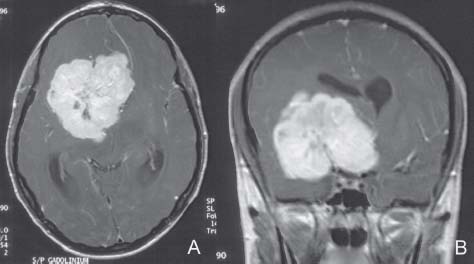Case 8 Hemangiopericytoma Fig. 8.1 (A) T1-weighted postcontrast axial and (B) coronal magnetic resonance images showing a diffusely enhancing 8-cm perisellar mass originating from the anterior clinoid process. Note the significant midline shift and ventricular dilatation.

 Clinical Presentation
Clinical Presentation
 Questions
Questions
< div class='tao-gold-member'>
Only gold members can continue reading. Log In or Register to continue



